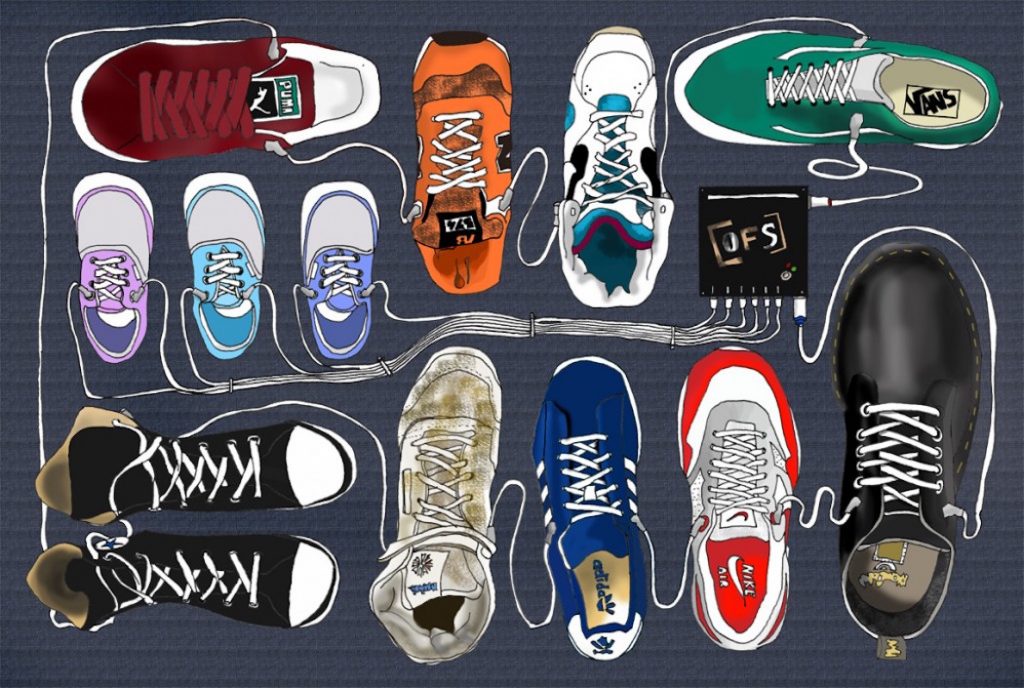+ Producers, Synth Heads and Sci-Fi Nerds, our new course with synthwave pioneer, Com Truise: Mid-Fi Synthwave Slow-Motion Funk, is out now!
Shoegaze music has a way of sticking around in our heads for a while — that familiar but distant sound of the guitar echoes endlessly in our memory. There are so many ways to create this kind of soundscape with your guitar. In my last article, “How to Create Dreamier Guitar Chords,” I started to investigate various chord structures that lead to signature shoegaze song crafting, so here I’ll be looking into affordable effects pedal combinations that can achieve that shimmering wall of sound.
If you are a guitarist writing songs and keen to shape your tone like the unforgettable sounds of My Bloody Valentine, Slowdive, Ride, and even Mazzy Star, here are the key pedals that can get you there! Who says you need three boards with 20 or more pedals like the original shoegazer Kevin Shields? Save your money and go buy a better amp stack or a cooler guitar!
Or, if you’re in a pedalboard trimming phase, and looking to lighten your tour load with a digital pedalboard, check out this free course with Kaki King exploring why and how she now only uses Apple’s MainStage 3 digital pedalboard, a MIDI controller and expression pedal on the road… and why she’ll never go back.
But back to the pedals. What are the most essential effect pedals you need?
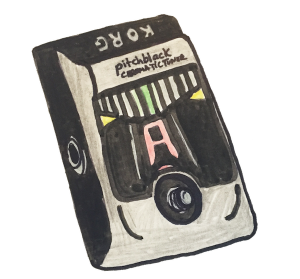
Well, you’re going to need a tuner pedal; all that hard, consistent strumming is bound to detune some of your strings after every couple of songs! Tuning by ear is pretty tough in club gigs, so it’s always handy to have a direct-signal going into your chain. Almost every guitarist I know uses the Boss TU-3, but the Korg PB01 works just as well and is cheaper! Boss and Korg are household brands. We’re just talking about a tuner pedal here, it doesn’t need to be high end. My trick is to put my tuner at the end of my effects chain, so I can mute all of my FX noise abruptly just by stepping on it once. It’s a lot of fun with powerful climactic endings.
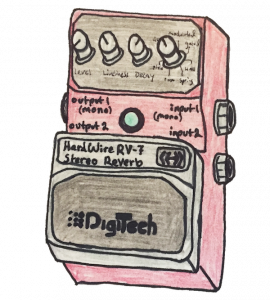
Okay, so the first effects pedal I would recommend for that signature shoegazer sound is a reverse reverb pedal — the one essential pedal that creates a noticeably different sonic palette than all other musical genres. A standard reverb pedal will fade out your playing after the attack; you’ll hear yourself hitting the strings and after that, the reverberation. The reverse reverb does the opposite. It’s kind of a twisted reverb sound, as you will hear the clean attack and, just as it starts to die out, you’ll hear the reverb fading in, eventually bringing the reverberated attack back at the end.
+ Enjoy access to Soundfly’s suite of artist-led music learning content for only $12/month or $96/year with our new lower price membership. Join today!
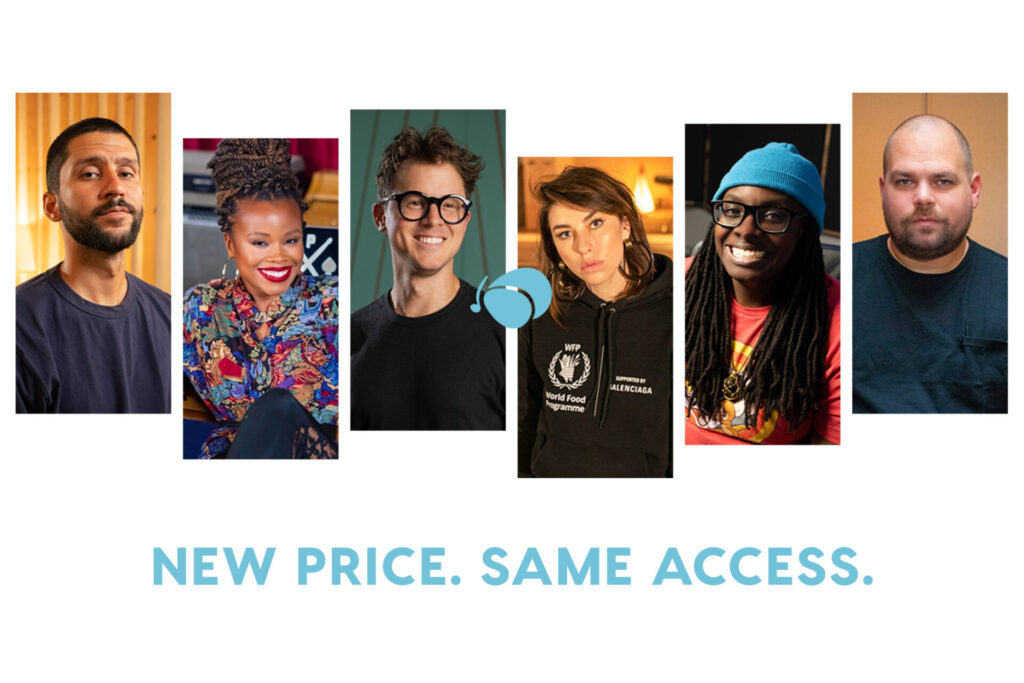
The best and cheapest ones I’ve found are the Digitech RV-7 and the Electro Harmonix Cathedral. Both have reverse settings but the RV-7 is much smaller, in case you need to save space on your pedalboard! If you’re playing your favorite chords through this effect they will sound like psychedelic, dreamy synthesized strings, especially when you’re playing a guitar that has a whammy. First try it with your clean sound.
Yum! And if you put it through a distortion pedal… BAM! Shoegaze!
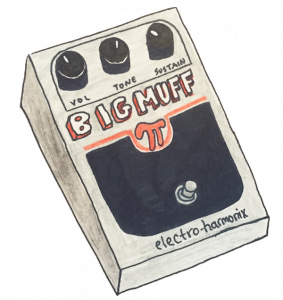
A common distortion pedal for shoegaze is the fuzz, and there’s almost none more famous than the Big Muff Pi. It’s famous for a reason. It creates a high quality, juicy, fat sounding distortion for a comparatively low price and is sought after for its sustain as well. The Big Muff is really quite perfect for creating those colorful walls of noise, but there’s such a huge range of overdrive and distortion pedals out there, you really need to find what fits your personal taste.
One of my personal favorites in the digital distortion category is the Digitech Hot Rod. It’s cheap enough to try out in your shoegaze setup, and has settings to make your sound both very thin, scratchy ,and dirty, as well as fat and warm. Scott Cortez of the lo-fi shoegaze band Astrobrite uses one. And so I do…
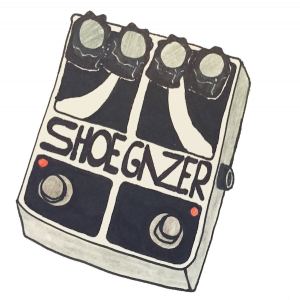
There are some slightly more expensive pedals built by Devi Ever FX like the Soda Meiser, the self-explanatory Shoegazer (used by Ringo Deathstarr) or the Rocket fuzz. They’ve got nearly endless sustain, can sound chaotic and super duper fuzzy. But Devi pedals are also pretty unpredictable, which can be fun but sometimes you have to fight with some disturbing frequencies that show up to the party. That’s what you get with analog pedals though — it’s the true experience!
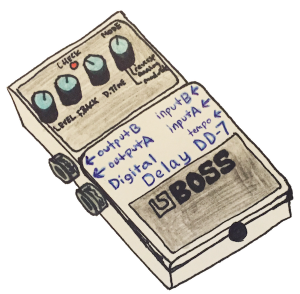
You’re also going to need a delay, one way or the other. When it comes to delay pedals, there is analog modulation and digital modulation. Many people automatically point to analog delays to say they are better than digital, but it’s always a question of taste, and most guitarists out there exploring expansive sound palettes will have both on their board. Analog delays sound more like a tape machine; their echoing tone changes the pitch a bit up or down and it’s darker fading out then a digital delay. The latter sounds more like an exact copy of the inserted signal that fades away. If you are a guitarist who likes to tap the delay time with your feet, this will affect your pedal choice as well.
The simple, digital BOSS DD-7 is small, durable and has the ability to tap delay time very accurately. Another unique pedal, which has its own sound entirely, is the VOX Delay Lab, which offers a pitch shifting delay mode to really turn your signal upside down! It will add one octave up to the note you are playing as the first echo you hear. The second echo you hear is an octave up from that, and so on… It’s such a dreamy swarm of tones, you should give it a try at your local guitar store sometime! As much as I love this pedal, it’s actually enormous, and no longer fits on my board, so for something a bit more compact you can try the BOSS PS-3.
There you have it, you can create huge shoegazing walls of guitar sound without having to strain your back carrying a huge pedal case. Of course, this is only the tip of the iceberg, but if you want your guitar tones to be as cold as that iceberg, this is a great place to start. Be creative and mess around, and if you’re ready to start writing, check out my post on finding your shoegaze sound through different chords and tunings. I hope to hear some music from you guys soon! Post your tunes in the comments below.
Keep on dreaming.
Play Your Heart Out!
Continue your learning adventure on Soundfly with modern, creative courses on songwriting, mixing, production, composing, synths, beats, and more by artists like Kiefer, Kimbra, Com Truise, Jlin, Ryan Lott, RJD2, and our newly launched Elijah Fox: Impressionist Piano & Production.
